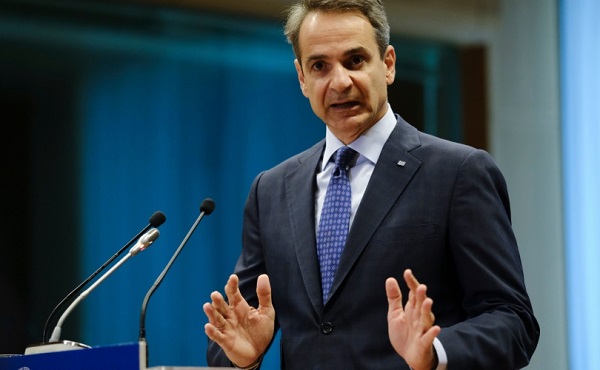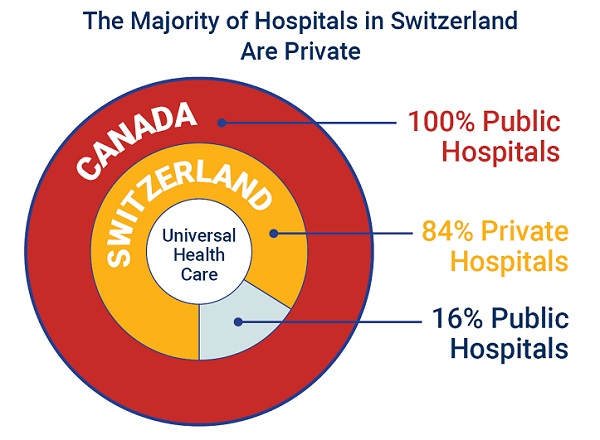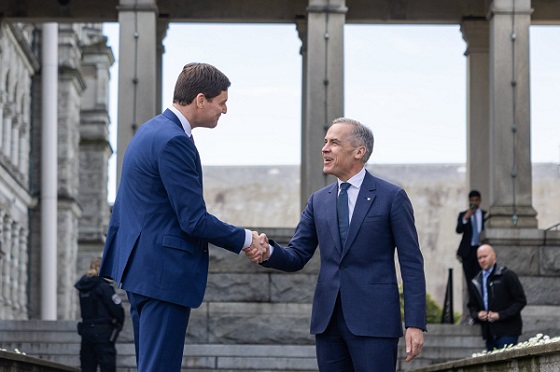International
Greece plans to spend 20 billion euros to halt ‘national threat’ of population decline

From LifeSiteNews
Demographer and data analyst Stephen Shaw has said that ‘no society in history has been known to come out of’ the ‘spiral’ of population decline.
Greece plans to spend 20 billion euros on economic incentives aimed at halting the country’s population decline, which Prime Minister Kyriakos Mitsotakis has called a “national threat.”
The nation that has been referred to as the “cradle of civilization” now has a fertility rate of 1.3, one of the lowest in Europe, and far below the rate of 2.1 that is needed to maintain the population.
In fact, the country now has twice as many deaths as it has births. Last year, Mitsotakis shared during a demographics conference that Greece recorded one birth for every two deaths in 2022.
On September 30, a demographic plan to incentivize having children, totaling 20 billion euros, was presented to Greece’s government. The money will be spent on tax breaks, day care vouchers as well as the establishment of day care centers in workplaces, and cash benefits rewards for raising children. Families with three or more children will receive greater compensation.
Family and Social Cohesion Minister Sofia Zacharaki said on October 2 that “the ultimate goal” of the plan “is to improve the standard of living.”
She noted that, according to current forecasts, by 2070 the biggest population group will be people over 90 years old.
The country is one of many undergoing different phases of population decline headed toward collapse. Greece’s particularly low birth rate may be further exacerbated by the economic hardships plaguing the country, which in July had the second-highest unemployment rate in the EU.
Demography experts such as data analyst Stephen Shaw, the creator of the documentary “Birthgap,” are skeptical about whether economic incentives can reverse the trend of population decline. He has noted that even the Roman Empire, in its later stages, enacted policies aimed at increasing birth rates, including taxing the childless.
According to Shaw, “No society in history has been known to come out of” the “spiral” of population decline.
In his film “Birthgap,” he has documented how declining birth rates in the U.S. and around the world are being driven by an “explosion” in childlessness as opposed to smaller family sizes.
This trend of childlessness began to crop up in the 1970s. For example, in Japan in 1974, one in 20 women were childless. By 1977, the ratio was 1 in 4, and by 1990, it had reached 1 in 3, a statistic that held in 2020. Shaw has shared that most countries have likewise now become “childless nations,” where one-third or more people will become “childless for life.”
It is notable that the Institute for Family Studies (IFS) confirmed in December 2022 that the majority of childless women actually desire children. Delayed childbearing, and as Shaw commented in his film, failing to “find the right partner at the right time” are major factors contributing to the childlessness explosion.
Commentators such as Elon Musk have warned that if global birth rates continue to decline at their current projected rates, “human civilization will end.”
Crime
UK finally admits clear evidence linking Pakistanis and child grooming gangs

Quick Hit:
After years of denial and political cover-ups, the UK government has formally acknowledged a disturbing link between Pakistani-heritage men and child grooming gangs. A scathing new review has prompted Prime Minister Keir Starmer to reverse course and launch a full national inquiry into the widespread abuse.
Key Details:
- The Casey Review found “clear evidence” of Pakistani men’s overrepresentation in grooming gangs and accused authorities of ignoring the abuse to avoid accusations of racism.
- Home Secretary Yvette Cooper confirmed over 800 historic child sex abuse cases will be reopened and prosecuted where possible.
- The Labour Party and Prime Minister Starmer were previously opposed to a national inquiry, with critics calling this reversal a politically motivated “smokescreen.”
Diving Deeper:
The British government has finally acknowledged a link between Pakistani-heritage men and the grooming gang epidemic that has plagued communities across England for decades. The admission comes following the release of a damning public review led by Baroness Louise Casey, which uncovered years of institutional failure, racial sensitivity, and political cowardice.
Home Secretary Yvette Cooper presented the findings in Parliament, confirming that the Casey Review had “identified clear evidence of over-representation among suspects of Asian and Pakistani-heritage men.” She condemned the systematic rape of vulnerable girls—some as young as 10—and the authorities’ “unforgivable” failure to act.
“The sexual exploitation of children by grooming gangs is one of the most horrific crimes,” Cooper said, noting that too many warnings had been ignored over the last 15 years. She announced that the government would adopt all of Baroness Casey’s recommendations and reopen more than 800 historic cases.
Prime Minister Keir Starmer, who previously dismissed calls for a national inquiry as “far-right misinformation,” abruptly changed course over the weekend and agreed to a full inquiry with legal authority to compel testimony. This reversal followed mounting pressure from campaigners like Dame Jasvinder Sanghera, Elon Musk, and Reform UK’s Nigel Farage.
Labour MP Sarah Champion, once ousted for raising alarms about Pakistani grooming gangs in her Rotherham constituency, welcomed the inquiry. “There’s a real sense justice has not been handed out fairly,” she said, accusing officials of failing victims for fear of “causing offense.”
The Casey review also pointed to illegal immigration as a contributing factor and called for mandatory ethnicity data collection in child exploitation cases. Critics argue that authorities in Labour-run areas turned a blind eye to the abuse—some allegedly in exchange for votes—treating white working-class girls as expendable while shielding perpetrators.
Former detective and grooming whistleblower Maggie Oliver expressed skepticism, warning that unless the inquiry is led by Baroness Casey, it risks becoming another whitewash. “This is about gross criminal neglect at the top of policing, at the top of government, at the top of social services,” Oliver said.
While the inquiry marks a long-overdue step toward accountability, some warn it may be politically perilous for Starmer. As former head of the Crown Prosecution Service, he held a central role when many of these abuses first surfaced. And with many of the cover-ups tied to Labour councils, the fallout could deepen public distrust in the party.
Business
Trump family announces Trump Mobile: Made in America, for America

 MxM News
MxM News
Quick Hit:
On the 10-year anniversary of Donald Trump’s iconic campaign launch, the Trump family announced the debut of Trump Mobile, a new wireless company offering American-built smartphones, 5G coverage, and a values-driven alternative to Big Tech carriers.
Key Details:
-
Donald Trump Jr. and Eric Trump introduced Trump Mobile’s flagship service Monday, calling it a “transformational” alternative aimed at “our nation’s hardest-working people.”
-
The “47 Plan,” priced at $47.45/month, offers unlimited talk, text, and data, free international calls to U.S. military families, telehealth, roadside assistance, and no credit checks.
-
Trump Mobile’s customer support is fully U.S.-based and live 24/7—“not automated,” the company says—while a new American-made “T1 Phone” is slated for release in August.
Diving Deeper:
Marking ten years since President Donald Trump descended the golden escalator to launch his first campaign, the Trump Organization on Monday announced its boldest private sector move yet: Trump Mobile.
Flanked by company executives, Donald Trump Jr. and Eric Trump unveiled the new cellular service, touting it as a patriotic, people-first alternative to legacy providers. “We’re building on the movement to put America first,” Trump Jr. said in a statement. “We will deliver the highest levels of quality and service.”
The cornerstone of Trump Mobile is the 47 Plan. Offered for $47.45/month, the plan includes unlimited data, full 5G coverage across all three major carriers, and a suite of benefits tailored to middle-class families, truckers, veterans, and anyone tired of paying premiums to companies that don’t share their values.
Among the key perks: 24/7 American-based customer service (with “real people,” not bots), comprehensive device protection, roadside assistance through Drive America, and telehealth services including mental health support and prescription delivery. Most notably, the plan includes free international calling to over 100 countries—an effort the Trump family says honors U.S. military families stationed abroad.
“We’re especially proud to offer free long-distance calling to our military members and their families,” said Eric Trump. “Those serving overseas should always be able to stay connected to the people they love back home.”
Unlike traditional providers, Trump Mobile advertises no contracts and no credit checks, appealing to a demographic long underserved by mainstream telecom giants. “Hard-working Americans deserve a wireless service that’s affordable, reflects their values, and delivers reliable quality they can count on,” Eric Trump added.
The company is also preparing to launch the T1 Phone in August—a sleek, gold smartphone “engineered for performance” and “proudly designed and built in the United States.” With that, the Trump Organization is not just entering the mobile market—it’s staking a claim as a direct competitor to Apple and Samsung.
-

 Alberta1 day ago
Alberta1 day agoAlberta’s grand bargain with Canada includes a new pipeline to Prince Rupert
-

 Bruce Dowbiggin17 hours ago
Bruce Dowbiggin17 hours agoWOKE NBA Stars Seems Natural For CDN Advertisers. Why Won’t They Bite?
-

 Business1 day ago
Business1 day agoCarney’s European pivot could quietly reshape Canada’s sovereignty
-

 Energy18 hours ago
Energy18 hours agoCould the G7 Summit in Alberta be a historic moment for Canadian energy?
-

 Business7 hours ago
Business7 hours agoCarney praises Trump’s world ‘leadership’ at G7 meeting in Canada
-

 Crime18 hours ago
Crime18 hours agoMinnesota shooter arrested after 48-hour manhunt
-

 Crime3 hours ago
Crime3 hours agoUK finally admits clear evidence linking Pakistanis and child grooming gangs
-

 Health12 hours ago
Health12 hours agoLast day and last chance to win this dream home! Support the 2025 Red Deer Hospital Lottery before midnight!



